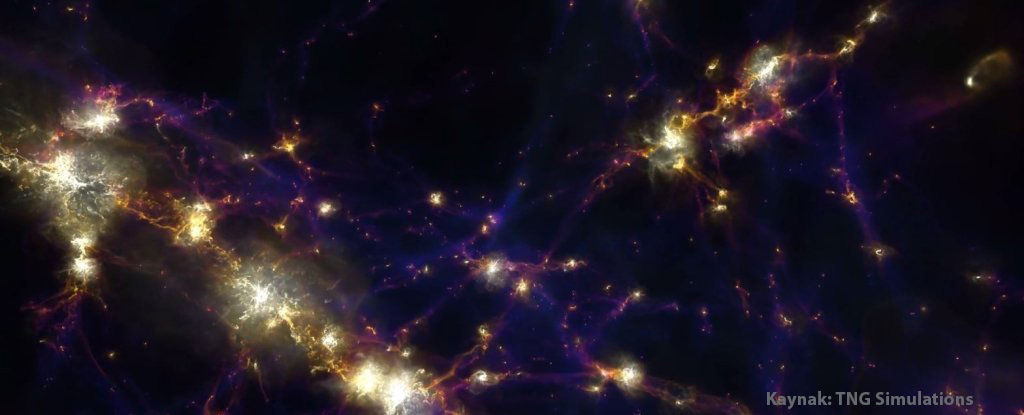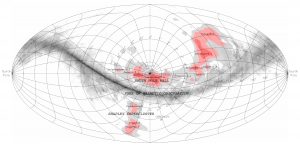
Biggest Structures of the Universe
Astronomers discovered one of the largest structures in the known universe – a giant wall of galaxies of about 1.4 billion light years long. Considering how close this massive structure is to us, it is remarkable that we never noticed it before.
For the past ten years, an international team of astronomers led by Brent Tully from the University of Hawaii’s Institute for Astronomy, has been mapping the distribution of galaxies around the Milky Way. Astronomers dubbed this newly-defined structure “The South Pole Wall”, which lies beyond Laniakea, a huge supercluster of galaxies including our own.

Galaxies are not just distributed randomly in the universe. Instead, they are grouped into large filaments separated by giant voids of space. Each filament is basically a wall of galaxies stretching across hundreds of millions of light years. These are the largest structures in the known universe. Outside, there are regions consisting almost entirely of emptiness. Other similar structures identified to date include the Great Wall, Sloan Great Wall, Hercules-Corona Borealis Great Wall, and Boötes Void.
However, the newly discovered South Pole Wall is special because it is very close to the Milky Way galaxy, only 500 million light years away. But, how did we not notice such a massive structure so close to us? It was hidden behind the Milky Way galactic plane, sometimes called by the astronomers as the Zone of Avoidance or Zone of Galactic Obscuration. It is almost impossible to observe anything behind this region, which is the disc of our home galaxy, so thick and bright with dust and gas and stars that it obscures everything else.
The team behind the discovery of the South Pole Wall made redshift observations on galaxies as part of their research in the sky, while also adding in their peculiar velocity values – the velocity of a galaxy relative to its motion due to the expansion of the Universe. This technique allows astronomers to spot otherwise unseen masses. Using this data, researchers were able to map the South Pole Wall.
The South Pole Wall curves the region like an arm, just beyond the Laniakea Supercluster. The busiest part lies in the direction of the Earth’s South Pole, inspiring its name. It draws a large arc of 200 degrees, extending into the northern sky. Since there are parts of it we cannot see, the South Pole Wall is likely larger than we can say at this point.
REFERENCES
- 1. https://www.sciencealert.com/a-giant-wall-of-galaxies-has-been-found-stretching-across-the-universe
- 2. https://phys.org/news/2020-07-astronomers-massive-laniakea-supercluster.html
